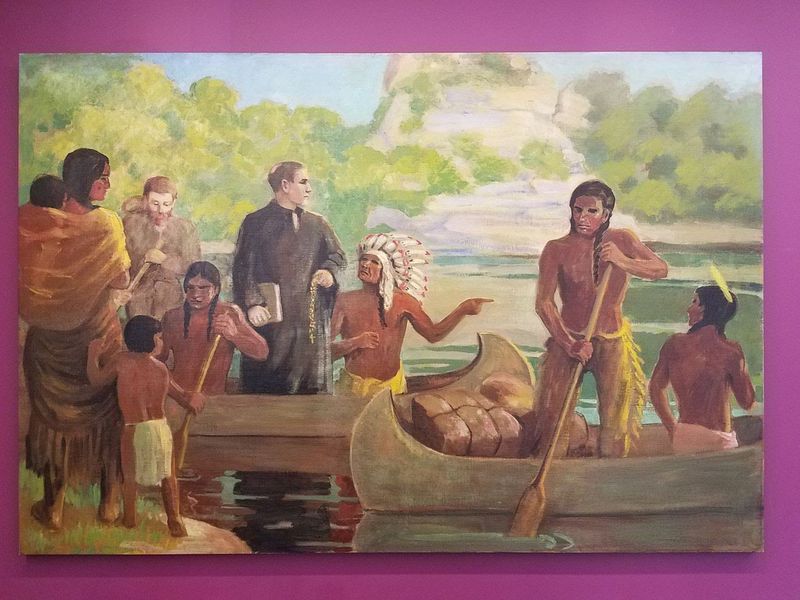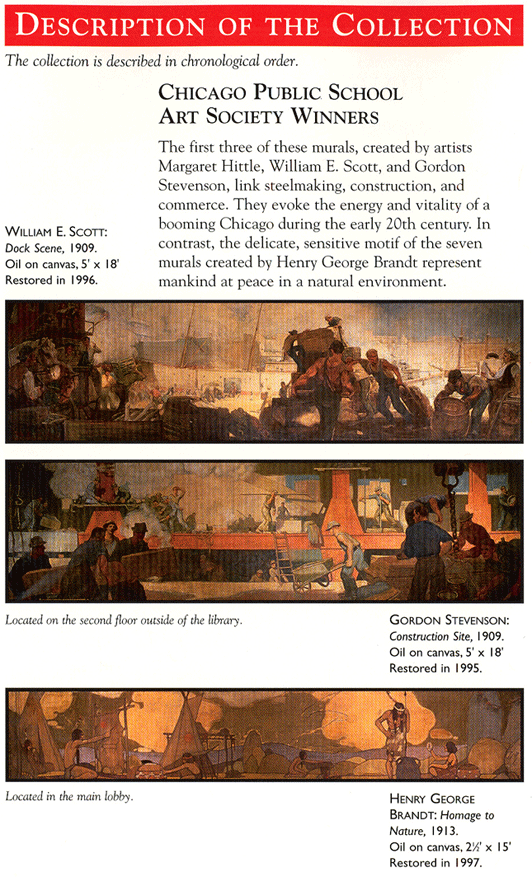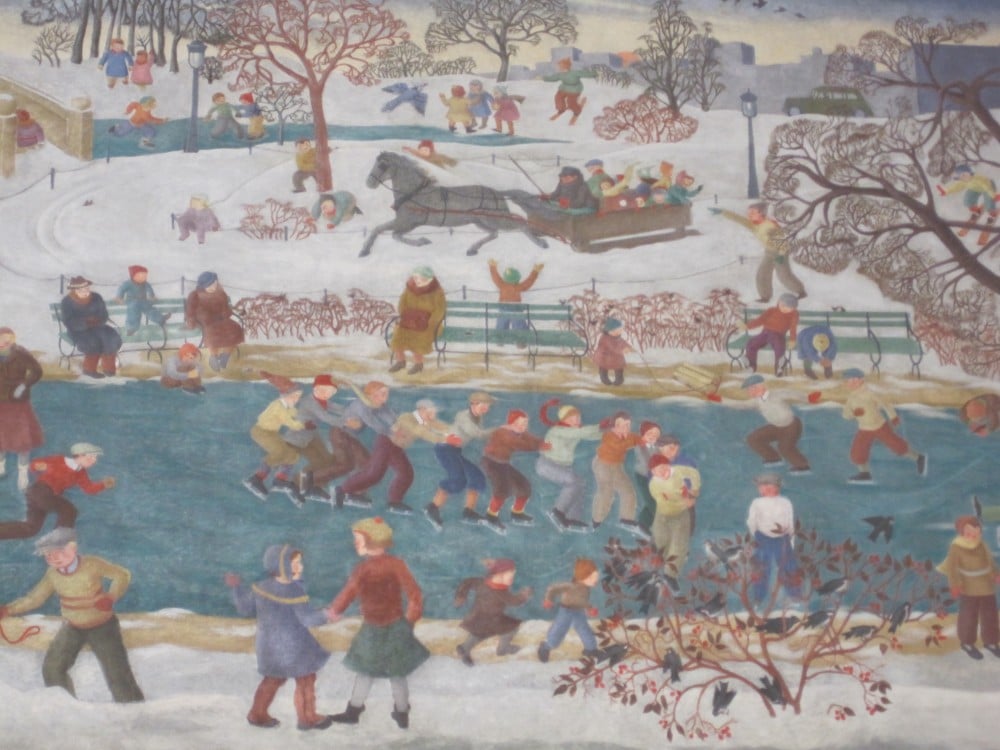Art World
Chicago Schools Boast the Largest Collection of Early 20th-Century Murals in the US. So Why Are Activists Encouraging Their Removal?
What will Chicago Public Schools do with its WPA-era murals?

What will Chicago Public Schools do with its WPA-era murals?

Sarah Cascone

Chicago Public Schools boast the country’s largest public collection of early 20th-century murals, but not everyone is happy about it. That’s because those works, created between 1904 and 1943, haven’t always aged well.
The bulk of the murals were commissioned by the Work Projects Administration as part of President Franklin Delano Roosevelt’s New Deal. But while the murals preserve an important moment in American history, they also preserve some antiquated attitudes about race and ethnicity.
At issue are the ways that some of the works depict people of color, particularly Native Americans. In some cases they rely on stereotypes and avoid the violent realities of colonization, which forced indigenous peoples off their land and exposed them to devastating diseases that decimated their peoples, reports the Chicago Tribune.
The public was quick to weigh in after the Chicago Board of Education proposed a new policy regarding the acquisition, ownership, and conservation of the schools’ artworks. One comment suggested that the art depicting Native Americans could “be moved to a warehouse, and even exhibited at a later time about RACISM in art, and the ‘Master Narrative’/’Manifest Destiny’ myths of the past about Europeans colonizing this land.”

A description of some of the historic artworks at Chicago’s Lane Tech College Prep High School. Courtesy of Lane Tech College Prep High School.
Many comments called specifically for the removal of artworks decorating the Chicago Public Schools office building in Garfield Park, which features a mural of Native Americans steering canoes, one of which carries a white man. (Potentially adding insult to injury, the murals are located in the same building as the school system’s American Indian Education Program.)
The official board policy is to keep WPA works on view in their original location “to the extent prudent and practicable,” but notes that works can be relocated and even sold or gifted, provided the piece will be publicly displayed, with prior approval. (This does not substantially differ from the policy as last approved in the year 2000.)
A number of the schools’ historic murals have already been removed over concerns about their content. One of the murals at the education offices that has been singled out for being problematic is a 1913 Christopher Columbus painting that was once on display above the auditorium doors at Trumbull Elementary in Andersonville.

Ethel Spears, Child and Sports – Winter (1937). This painting was removed from Percy Julian Junior High School in Oak Park in 2019 after the Social Justice Club complained that it only depicted white children. Photo by Barbara Bernstein, courtesy of the New Deal Art Registry.
Last year at Percy Julian Middle School in Oak Park last year, students from the Social Justice Club convinced administrators to remove Ethel Spears’s 1937 mural Child and Sports – Winter because the painting included only white children. The image didn’t reflect the student body’s diversity and the club feared it might make new students feel like they didn’t belong, according to NPR.
The decision to take down the work had something of a ripple effect. The neighboring Gwendolyn Brooks Middle School followed quickly suit and removed Spears’s companion piece, Child and Sports – Summer. And nearby Horace Mann Elementary moved to put wood paneling on top of Emmanuel Jacobson and Ralf Henricksen’s Community Life of Oak Park in the 19th Century, which shows white settlers spending the winter in cozy cabins while Native Americans shiver outside.
Chicago schools aren’t the only ones dealing with this thorny issue. A drawn out debate about a 13-panel Depression-era mural depicting scenes from the life of George Washington, including his slave ownership, saw the San Francisco Board of Education decide to cover up the artwork. (An earlier decision to paint over the works was loudly decried.)
The new policy was approved on Wednesday at a board meeting that also voted to end the school system’s recognition of Columbus Day, observing the October holiday only as Indigenous Peoples Day instead, rather than using both names for the date in its calendar.